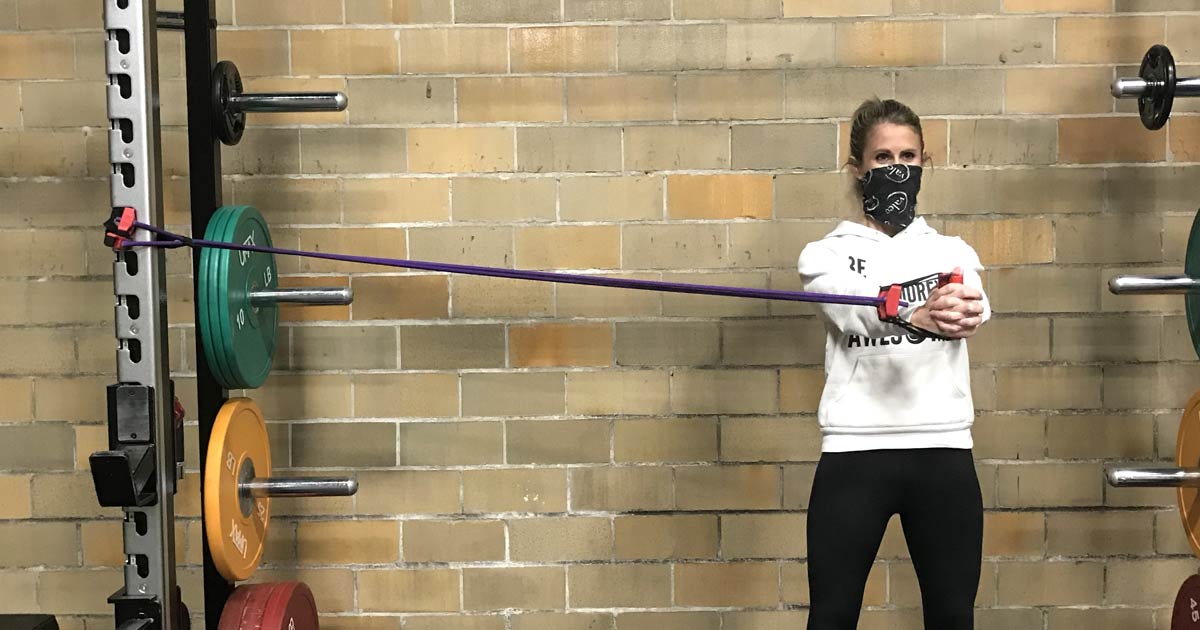When it comes to getting the most exercise bang for your buck, strength training reigns supreme. Not only does it help you tone and maintain lean muscle mass—vital for an effective metabolism and everyday function as you age—it strengthens bones and decreases risk of injury.
New Harvard Medical School research suggests weight training can be just as effective as cardio for protecting against heart attacks and strokes. Just one hour of strength training per week is related to a reduction in fat around the heart, a stronger cardiac muscle that pumps out blood more efficiently, improved blood flow overall and decreased body fat—all which lessen the risk of heart disease. Additional studies have even shown a reduction of depression and anxiety symptoms in those who strength trained at least two days a week.
WHAT IS STRENGTH TRAINING?
Strength training simply means progressively overloading your muscles. This can be done through higher reps of bodyweight movements, or when bodyweight movements stop being "overload" to your muscles, with added resistance in the form of equipment like weight machines, stretchy bands, dumbbells, barbells or kettlebells. It's a muscle-fiber-breakdown and rebuild-back-stronger process. A beautiful symbolism for many things in life, don't you think?

PUTTING TOGETHER A PLAN
A strength training practice doesn't have to be intimidating. Think about movements rather than body parts. In everyday life, you push, pull, use your core, bend at your hips (hinge) and change levels (squat up and down). So, let's train that way! Here are some examples of exercises in each movement category:
Push: Push-up, overhead press, triceps dips, chest press.
Pull: Seated row machine, inverted row with suspension straps, pull-ups, bicep curls.
Core: Pelvic tilt holds, planks, loaded carries, band anti-rotations.
Hinge: Deadlift, hip bridge, lunge, lateral lunge.
Squat: Bodyweight squat, goblet squat, split squat, step-ups.
Create a circuit by picking one exercise from each movement. Do each exercise for 8-12 repetitions. Have more time? Create one more circuit based on each movement pattern and run through it two or three times.
There are several ways to increase the effectiveness of your strength training practice.
First, master the movement using just your bodyweight. Once you're ready for loaded movements, choose weights that are challenging. Remember: It's only through overload that change happens! You should feel fatigued by the last rep while still keeping good form. If you're able to do more than 12 reps, you're reaching more towards endurance training rather than strength training. Though it depends on your goals, keep the weights heavier and reps lower.
Aim to strength train two to three days a week. I recommend creating "A Day" and "B Day" circuits, alternating each with every workout session. You could do your strength training as its own workout or mix it in with your cardio. Doing short interval bursts of cardio—followed by a strength training circuit—and repeating for 20-30 minutes is a fantastic way to burn calories and build lean muscle.
Dismiss what you've heard about "muscle confusion!" Random workouts lead to random results, so it's perfectly fine (and recommended) to stick with the same "A Day" and "B Day" workouts for four to six weeks. This ensures you're working the muscles in the same way each time, forcing them to adapt and get stronger! Progress your circuits by either:
- Adding more weight.
- Doing more reps.
- Combining exercises (ex. squat + bicep curl).
- Changing the tempo: Speeding up or pausing mid-movement can make the reps more challenging.
- Progressing to a more advanced exercise in that movement category.
Try creating your own circuits or reach out to a qualified Fitness Coach who can help develop the perfect program for you. Strength training may just be the missing piece to your wellness puzzle—one that helps you smile a little brighter, walk a little taller and flex a little longer. That's something to feel (even more) awesome about!
Jessica Luepke owns Valeo / Training, a gym in Holland that exists to help members look, move and feel (even more) awesome. When not swinging kettlebells or helping members establish healthy nutrition and mindset habits, she's near woods or water with her hubby, Mike, and boys, Cruz and Hunter. | valeotraining.com
This article originally appeared in the Feb/Mar 2021 issue of West Michigan Woman.
Photos courtesy of Jessica Luepke.




